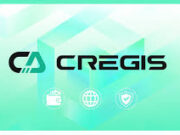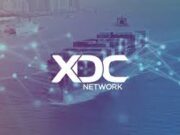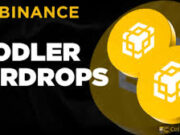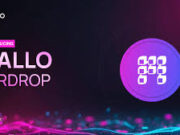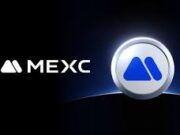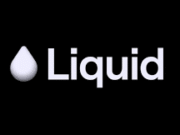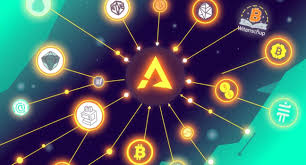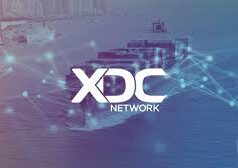Late October 2025 marks a pivotal moment in the evolution of financial infrastructure. Circle, the issuer of the USD-backed stablecoin USDC, has publicly launched the testnet for its Layer-1 blockchain, Arc. This isn’t just a developer playground: the rollout features participation from more than 100 financial institutions, asset managers and tech firms — including heavyweights such as Visa Inc. and BlackRock, Inc.. (Circle)
In this article, we’ll walk through what Arc is, the significance of the testnet launch, how major institutions are engaging, and what the pathway forward looks like for programmably-settled finance.
What is Arc?
Arc is described by Circle as an “Economic Operating System (OS) for the internet” — a purpose-built Layer-1 blockchain designed to support regulated financial workflows, tokenised assets, payments, cross-border FX, and more. (arc.network)
Key features of Arc include:
- Predictable dollar-based fees instead of volatile native tokens. (The Cryptonomist)
- Sub-second transaction finality to reduce settlement latency and risk. (The Cryptonomist)
- Opt-in configurable privacy, so organisations can limit metadata exposure while retaining auditability. (The Cryptonomist)
- Direct integration with Circle’s full stack — from USDC to payments rails to developer tools. (Circle)
Essentially, Arc looks to bridge the gap between traditional financial infrastructure and the promise of blockchain‐native systems.
Who’s Participating, and What Are They Testing?
Circle’s announcement names a wide roster of participants across banking, asset-management, payments, fintech and infrastructure. (investor.circle.com)
For example:
- In banking and asset-management: BlackRock, HSBC, Goldman Sachs, Deutsche Bank, Standard Chartered. (CoinDesk)
- In payments and fintech: Visa, Mastercard, AWS, Cloudflare, Nuvei among others. (investor.circle.com)
- On the developer and token-issuance side: stable-coin issuers from Australia, Brazil, Mexico, the Philippines; wallet providers; tool-kits; cross-chain bridges. (arc.network)
These institutions are testing many facets: payments settlement via USDC on-chain, tokenised funds, FX flows, cross-border settlement, developer tools, and more. (CoinDesk)
For instance, BlackRock’s head of digital assets said that Arc will provide insights into how stablecoin-denominated settlement and on-chain FX could “unlock additional utility for on-chain assets.” (Circle)
What This Development Might Imply
This launch holds significance on multiple fronts — enterprise finance, crypto infrastructure, payments innovation — and here’s a breakdown:
1. A Built-for-Enterprise Blockchain
Most public blockchains today were built for open access, cryptographic decentralisation and token incentives. Arc is different: it emphasises predictability, compliance, and enterprise grade features (dollar-fees, sub-second finality, configurable privacy). That aligns with institutional needs. (The Cryptonomist)
2. Bridging TradFi & Web3
By securing major global banks, asset managers and payment networks as test-participants, Arc may serve as one of the more credible bridges between traditional finance (“TradFi”) and crypto/Web3 ecosystems. This is relevant for tokenising assets, streamlining post-trade infrastructure, and enabling global payment rails. (CoinDesk)
3. Payments, Settlement & Tokenisation Use-Cases
The fact that Visa and other payments firms are involved signals that Arc is not just for trading or DeFi — it is also about real-world payments, cross-border remittances, and value flows. Tokenised securities, money-market funds, funds of funds, and FX may shift on-chain through this infrastructure. (CryptoPotato)
4. Governance & Infrastructure Evolution
Circle emphasises that this testnet is the first step toward a network that will shift toward distributed, community-based governance and validator participation. (Circle)
In short: this is less about hype and more about building infrastructure that can support the next generation of financial systems.
The Road Ahead: What to Anticipate
Launching Mainnet
While Arc’s public testnet is now live, the path to full mainnet launch remains. Circle notes that the testnet is experimental and subject to iteration. (arc.network)
Expanding Use-Cases & Geographies
Expect more use-cases to be added: multi-stablecoin gas fees, enhanced FX liquidity, tokenised asset issuance, deeper cross-chain interoperability. The testnet already lists issuers from multiple geographies and aims to add more. (Circle)
Regulatory & Compliance Considerations
Since many of the participants are regulated financial entities, the compliance, audit, custodial and regulatory aspects will matter hugely. The configurable privacy feature perhaps signals an anticipation of that.
Monitoring Adoption & Ecosystem Growth
One measure of success will be how quickly developers, institutions, and wallets adopt and build on Arc — and how thoroughly integrations (payments, custody, asset tokenisation) progress.
Why This Move Is Especially Important for Africa & Emerging Markets
Though much of the discussion centres on global banks and U.S./European tech firms, emerging markets may stand to gain significantly. Systems like Arc promise lower-friction cross-border payments, access to tokenised assets, and cheaper settlement rails — all of which are relevant in African, Latin American, and emerging-economy contexts. Circle itself pointed to geographies such as the Middle East and Africa. (investor.circle.com)
For businesses and individuals in regions such as Nigeria, Kenya or South Africa, a globally interoperable payments and asset-tokenisation platform could enable new business models: remittances, digital funds, programmable payouts, micro-finance structures, etc.
Challenges and Considerations
It’s important to maintain a realistic perspective. Some of the potential obstacles include:
- Mainnet readiness: Testnets often differ from production networks in performance, security and stability.
- Network effects: For Arc to succeed, multiple participants must adopt and integrate — not just individually but collectively across rails.
- Legacy-system integration: Banking, custody, regulatory, and ledger-systems must align with on-chain flows — which is complex.
- Regulation: Stablecoins, tokenised assets and cross-border flows are under intense regulatory scrutiny globally. That scrutiny will affect roll-out.
- Competition: Other blockchains and infrastructure providers will also vie for institutional attention. Arc has strong entrants, but it’s not alone.
Final Thoughts
The public testnet launch of Arc by Circle is more than a press release — it represents a tangible step toward the institutionalisation of on-chain finance. By engaging major global players such as Visa and BlackRock, and by focusing on enterprise-friendly features (dollar-fees, fast finality, privacy controls), Arc aims to fill a gap between legacy systems and next-gen financial rails.
As the rollout progresses, what happens next will tell us whether Arc becomes foundational infrastructure or one of many experiments. For observers, developers, and institutions alike, the coming months and years will be worth watching closely.
sources:
- Circle press release: “Circle Launches Arc Public Testnet” (October 28 2025) (Circle)
- CoinDesk article: “Circle, issuer of USDC, Starts Testing Arc Blockchain With Big Institutions Onboard” (CoinDesk)
- Cryptonomist piece: “Arc testnet launches with BlackRock, Visa and AWS — 5 things to watch” (The Cryptonomist)
- CryptoPotato: “Circle’s Arc Blockchain Testnet Goes Live: Over 100 Partners Including Mastercard, Coinbase on Board” (CryptoPotato)



